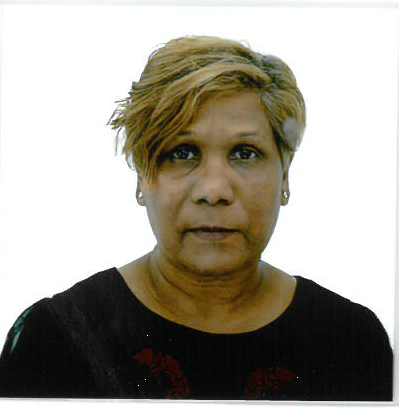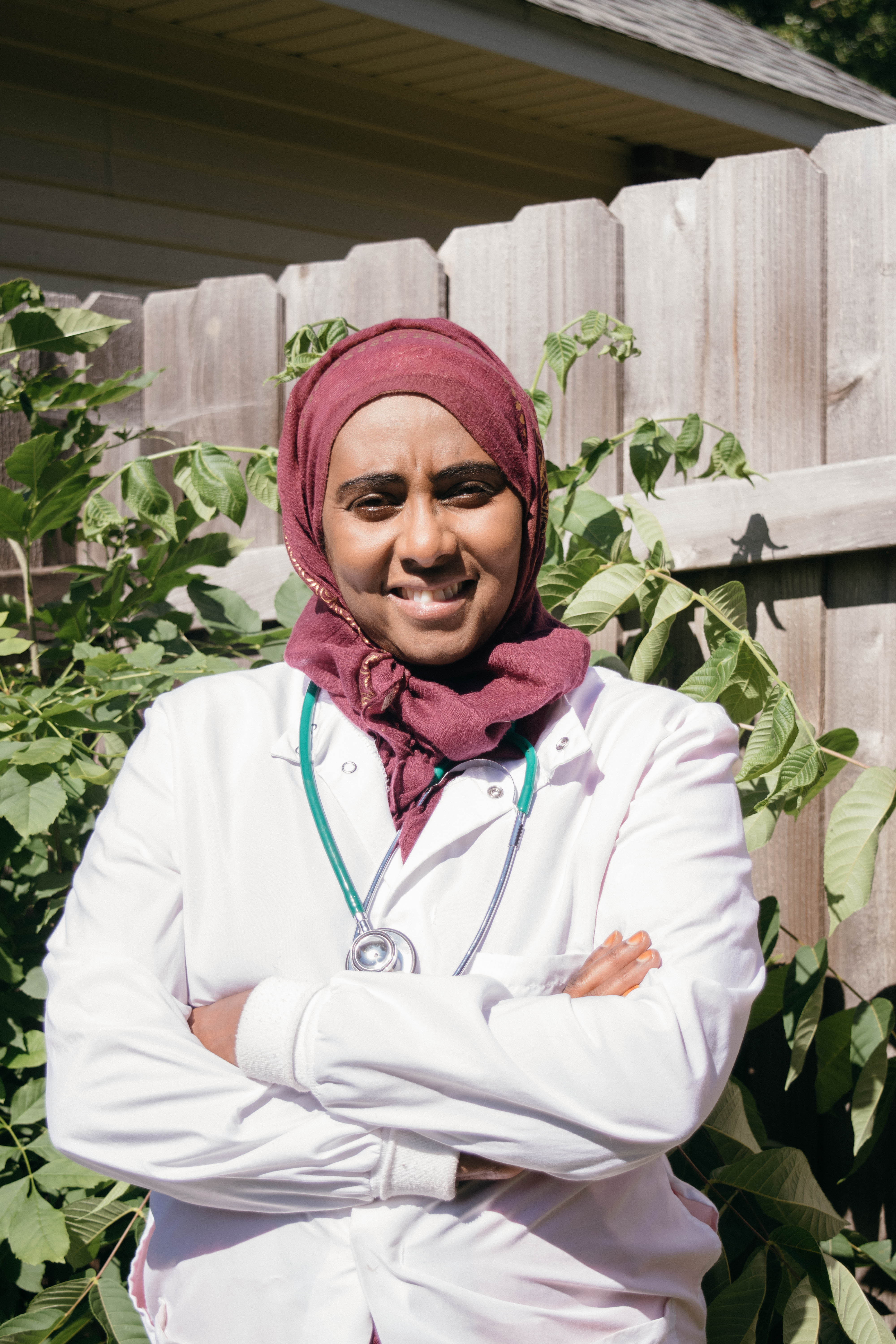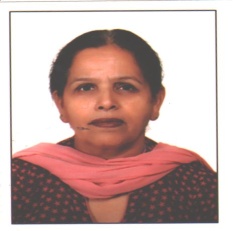Day :
- Mental Health | Mental Health Disorders | Eating Disorder | Psychiatric Nursing | Child Psychiatry | CBT | Womens Mental Health | Wellbeing
Location: Red Cedar Ballroom B

Chair
Atul Kumar Mehra
Jaagran Psychoanalysis and Wellness Centre, Canada

Co-Chair
Beata Karakiewicz,
Department of Social Medicine and Public Health, Pomeranian Medical University in Szczecin, Poland
Session Introduction
Kevin Coffey
University of Rochester Medical Center, USA
Title: Dual diagnosis
Time : 17:30-18:30

Biography:
Kevin Coffey has a master’s degree in Social Work and a doctorate in Counseling in Human Development. He has 28 years of working in behavioral health. He currently runs the day to day operations of a mental health center and supervises 30 clinicians. He is an assistant professor of Psychiatry at the University of Rochester Medical Center. He teaches in the University of Rochester Counseling Program and at Empire State College.
Abstract:
This Presentation will discuss the connection between mental health disorders and addictions. Large numbers of patients are impacted by both chemical dependency and mental health. Traditionally these disorders have been treated separately, but there is mounting evidence to suggest that patients are should be treated with an integrated approach. The presentation utilizes clinical examples to reinforce the areas outlined. The presentation will make recommendations regarding effective treatment of both disorders. The presentation will discuss cultural issues emerging from current research. It will conclude with identifying future areas of study.
Exhibitor
Provincial Health Services Authority, Canada
Title: Career opportunities in adult, child and youth mental health with Provincial Health Services Authority (PHSA)
Time : 11:45-12:30
Biography:
Abstract:
The Provincial Health Services Authority (PHSA) plans, manages, and evaluates selected specialty and province-wide health care services across BC, working with the five geographic health authorities to deliver province-wide solutions that improve the health of British Columbians. PHSA embodies values that reflect a commitment to excellence. As part of the provincial mental health services continuum, BC Mental Health & Substance Use Services (BCMHSUS) provides a diverse range of specialized, "one-of-a-kind" tertiary mental health and substance use services to adults across the province. These include services located at the Forensic Psychiatric Hospital and six regional clinics, Correctional Health Services, the Burnaby Centre for Mental Health & Addiction, and Heartwood Centre for Women. In addition to delivering these clinical services, BCMHSUS provides provincial leadership for system-wide improvement through its work in: health promotion and illness prevention; knowledge exchange; and research and academic teaching. BC Children's Hospital (BCCH) cares for the province's most acutely ill or injured children and youth, provides developmental and rehabilitation services to children and youth throughout BC, and offers a broad range of health services. BC Children’s Mental Health services provide psychiatric assessment, short-term individual (including eating disorders), family, and group treatment, and medication review. BCCH and BCMHSUS are agencies of the Provincial Health Services Authority (PHSA) which plans, manages, and evaluates specialty and province-wide health care services across BC. PHSA embodies values that reflect a commitment to excellence. These include: Respect people • Be compassionate • Dare to innovate • Cultivate partnerships • Serve with purpose

Biography:
Catherine Jirak Monetti has her expertise in Nursing Education and non-exposure trauma therapy. A Robert Wood Johnson Foundation (RWJF) Scholar, she earned her Doctor of Philosophy from Rutgers, College of Nursing in May, 2014. She is trained in Gestalt Psychotherapy, EMDR Trauma Therapy, and Therapeutic Touch (TT) Energy Healing. She has been teaching undergraduate, graduate, and doctoral nursing students for 27 years. Her qualitative doctoral dissertation research, “Somatic countertransference experiences of nurse Therapeutic Touch practitioners: A content analysis,” contributes to the academic and clinical debate about the self/other distinction in neuroscience, nursing, psychology, and philosophy. Her research was presented by poster at the 2014 CANS (Council for the Advancement of Nursing Science) State of the Science Congress on Nursing Research: Optimizing Health by Addressing Complexity, Washington, DC, September 17 - 20, 2014., and at the Sigma Theta Tau International 28th Nursing Research Congress, July 28, 2017,Dubin, Ireland.
Abstract:
Statement of the Problem: Poorly articulated and minimally researched, somatic countertransference (SCT) is a spontaneous phenomenon sometimes experienced by therapists during their work with traumatized clients. A more positive perspective on countertransference, it is defined by Orbach and Carroll (2006) as “the therapist’s awareness of their own body, of sensations,
images, impulses, and feelings that offer a link to the client’s healing process” (p. 64). The study is timely and aligned with current state of the science on use of Complementary and Alternative Medicine (CAM; Strauss, Coeytaux, McDuffie, Williams, Nagi, & Wing, 2011).Purpose of the Study is to qualitatively describe SCT experiences of nurse Therapeutic Touch (TT) practitioners.
Methodology & Theoretical Orientation: Use of purposeful sampling recruited eight experts. Audiotaped sixty-minute face-to-face in-depth interviews were conducted using a semi-structured interview guide with six open-ended questions. Sandelowski’s (1993, 2000, 2010) preferred method of latent content analysis produced codes and subcategories grounded exclusively in the saturated data (Patton, 2002).
Findings: Ten subcategories, three categories (Donabedian, 1988), and one major theme were inductively generated to reveal the underlying meaning in the communication (Chang, 2001). “SCT: A Language for Healing Trauma” was consistent with social science communication research (Krippendorff, 1989, 2004), SCT was found to be a factor in the healing of trauma, experienced during the verbal and nonverbal communication of one group of nurse TT practitioners in interaction with traumatized clients.
Conclusion & Significance: SCT mitigates vicarious traumatization and enhances compassion satisfaction in the therapist. Increased understanding of SCT can further promote the adjunctive role of TT and embodiment in trauma therapy. Study findings contribute to the academic and clinical debate about the self/other distinction in neuroscience, nursing, psychology, and philosophy.
Molly Hawke
Providers for Healthy Living, USA
Title: How do you define health?: Incorporating health at every size (TM) principles into psychiatric appointments to enhance overall wellness

Biography:
Molly Hawke is an outpatient adult psychiatrist in Columbus, Ohio. She completed undergraduate studies at Ashland University in Ashland, OH. She completed medical school and psychiatry residency at The Ohio State University and is board certified in psychiatry. As is common for psychiatrists in the Midwest her appointments center around medication management for mental health disorders. This medication management model is similar to that of a primary care physician who manages medical illness. She strongly feels that cultural perceptions of health and body can impact one's mental health. As a result, she has worked to incorporate Health At Every Size (TM) principles into her patient appointments
Abstract:
Health at Every Size (TM) rejects the idea that one's overall health and one's body size are inherently connected. It respects the diversity of body shapes and sizes, encourages joyful movement, and promotes individualized eating based on hunger, satiety, nutritional needs, and pleasure. Emphases on dieting and thinness are an unfortunate part of US culture, but many studies show that diets do not work long-term in the vast majority of individuals. In a US medical clinic or hospital, medical professionals often have limited time and little to no training in providing meaningful therapeutic interventions to patients. However, a trusted medical professional has the opportunity to substantially improve overall wellness by beginning a conversation about health and body that is free of weight bias. It can take just a few minutes to introduce basic principles of Health at Every Size (TM), provide education about the data supporting it, and encourage a change in thinking or behavior. The goal is to leave patients feeling that 'health' and 'well -being' is so much more than the size of one's body. Following this presentation, attendees should be able to: Understand the concept of weight bias and how it affects us, particularly medical professionals. Understand how 'diet culture', which is particularly pervasive in the United States, can negatively impact one's mental health and well-being. During a patient encounter, take as little as 2-3 minutes to introduce a Heath at Every Size (TM) principle, provide a brief education on it, and encourage a change in thinking or behavior.
Lai-Moy Carman Wong
The Chinese University of Hong Kong, Hong Kong
Title: Mental health of youth in Hong Kong

Biography:
Lai-Moy Carman Wong Carman.Bachelor of Social Work, Master of Education in Counselling of University of North Texas, Registered Social Worker recognized by Social Workers Registration Board Hong Hong, Associate Fellow & Approved Counselling Supervisor of The Hong Kong Professional Counselling Association (HKPCA), Lecturer and Fieldwork Coordinator BSSc Program of Department of Social Work, Chinese University of Hong Kong, Member of Mental Health Social Workers Chapter of Hong Kong Social Workers Association, Experienced social worker in counselling and mental health field for more than 20 years.
Abstract:
The golden period of development for youths is between the ages of 12 and 24, a period that is also generally recognized as adolescence and young adult. This is an important stage of development in which young people encounter many physical and psychological changes and adaptations. These learning experiences and challenges also affect how adolescents enter adulthood. If youths can successfully overcome their physical, psychological, and life changes and challenges, good mental health will be promoted. Previous researches show that among mentally ill adults, disorder onset for 50% of patients was prior to age 14, and disorder onset for 75% of patients was prior to age 24. Another study from Hong Kong indicated that 16.4% of secondary school students in Hong Kong showed symptoms consistent with the diagnosis of mental illness; 1.3% suffered from depressive disorders; and 6.9% suffered from anxiety disorders. This paper presents discussions on the mental health issues included early psychosis, depression, anxiety disorders, suicide, drug abuse, and internet addiction of youths in Hong Kong which also attracted social concern in Hong Kong. The aforementioned mental health issues cannot be ignored and should get social concern. This presentation attempts to present prevalent mental health issues among youths in Hong Kong and suggests early intervention and the active promotion of community education about youth mental health. It also recommends various supports from family, education, medical, and social service perspectives.

Biography:
Kevin Coffey has a master’s degree in Social Work and a doctorate in Counseling in Human Development. He has 28 years of working in behavioral health. He currently runs the day to day operations of a mental health center and supervises 30 clinicians. He is an assistant professor of Psychiatry at the University of Rochester Medical Center. He teaches in the University of Rochester Counseling Program and at Empire State College.
Abstract:
This presentation will discuss the relationship between attachment style and addictive behavior. Healthy attachment style is significantly related to positive mental health. The work of John Bowlby and Mary Ainsworth were groundbreaking in shedding light on the importance of attachment in healthy development. There is now neuroscience evidence that supports their findings. In addition to this presentation outlining the psychological relationship attachment style and addiction, it will present the underlying neuroscience that supports this relationship. The presentation will offer recommendations regarding treatment from an informed attachment perspective. This includes recommending the importance of group therapy. The presentation will include numerous clinical examples that support the theory. Issues of cultural diversity will be reviewed as well as future implications for this particular area of study.
Daniel Pressello
The Courage and Strength Games, Canada
Title: How sports can help us overcome past traumas

Biography:
Daniel Pressello has both personal life experiences and professional experiences with mental health issues and concerns. He studied at Vancouver College of Counsellor Training, earning 16 certificates in mental health therapy courses and programs. He was studying towards his MA in Social Work, but sidelined due to on personal health issues and concerns. During the summer of Prince Harry’s Invictus Games in Toronto, Canada he was suicidal, but after watching and viewing information about Prince Harry’s InVictus Games, he thought why can’t there, or is there any sporting event for everyone that is experiencing or has experienced mental health issues and concerns. As he watched athletes compete and during personal interviews heard repeatedly solders, tell their story of how they gained The Courage & Strength to face their demons, in dealing with grief and loss of comrades, or their own limbs and through support of others & sports. As indirect result of hearing and watching these soldiers tell and share their very same feeling of suicide, worthlessness, heading done the path of self-destruction. Through those soldiers and through Prince Harry, I decided not to kill myself and I just knew from that moment on, I found my reason for living and I had to, help others that may be dealing with PTSD etc., find their reason to want to live.
Abstract:
Life itself is in many ways very competitive, too competitive to some degree. We are more concerned about the competition (the game and our role,) that we often miss out on the joy of the game. We begin this game at early stages of our lives, being pushed to think and train our brains to always be in a competitive state of thinking. This is no pun intended when I state the term “Racing Thoughts”, which to many kids, youth and young adults are experiencing at never, at levels never witnessed before. These racing thoughts lead to high levels of anxiety, depression, problems, concentrating, reducing our cognitive abilities, which in turn can lead to anger issues, substance extermination, and abuse. A recent study showed since the release of the iPhone 5 (2007 to 2015) tweens, teens, and college/university students have confirmed, by online/phone activity (number of hours,) and by their own admittance that has never felt so alone, or not included even though we can connect and socialize more than ever before with people. With a sexual assault occurring every 98 seconds for example in the US and over 1,46,000 children a day staying home from school, because school is to be frightening and Sports can help us re-train our brains from both a cognitive aspect, as well as a mental & emotional aspect. A fall, a slip can lead to a devasting injury, that can and often is traumatic for both amateur and professional athletes from a mental and emotional aspect. One of the most important things I have learned and have been taught to overcoming my past traumas, is the quicker I am able to let it go (meaning the past,) the quicker I recover. This is also true of athletes, they can’t change the fact that they were injured, because of their actions, or some else’s. For a full and proper recovering to occur, they are taught, and they train themselves to quickly and properly let go of their grief and anguish of the injury and focus on their present and future. Mental and emotional recovery from past traumas is not a one size shoe fits all approach of prescribing medications for both physical and mental & emotional pain, associated with issues such as PTSD. Sports has shown to be beneficial in many aspects of helping people deal with past traumas.
John Jacob Mundukottackal
Agape Mental Health and Research Institute, India
Title: Impact of child sexual abuse on mental health correlates among adolescent girls

Biography:
John Jacob Mundukottackal is a psychologist, founder and Honorary Director of Agape Mental Health and Research Institute in the State of Kerala, India. It is an NGO of mental health. Minor psychological problems and in developing the positive mental health of people at large. This is an untouched and developing field in India, especially in Kerala. He has personally counseled more than 10,000 cases and has conducted more than 2000 psycho-educative sessions on mental health for different age groups within the socio-cultural community. He is a member of ‘Child Welfare Committee’, (Government of Kerala) which consists of a bench of magistrates responsible for implementing Juvenile Justice Act amended (2006) which protects the ‘Need of Care and Protection’ for 6 years. He is also a Research Scholar towards Doctoral Program on the topic of ‘The Impact of Multi-Model Psychological Intervention on Mental Health correlates of Sexually Abused Adolescent Girls’.
Abstract:
Child sexual abuse is a universal problem that occurs across gender, caste, color, religion, socio-economic group. Sexual abuse creates intense trauma and emotional problems which create serious short term and long term psychological and behavioral problems. 81.53% of the total incidence of child sexual abuse was reported amongst children between 11 and 18 years of age. The pre-adolescent to the adolescent child seems to be most at risk. Child sexual abuse could have a severe impact on the different aspects of mental as depression, stress tolerance, emotional intelligence, resilience, self-esteem and psychological well-being. The present study is to find the impact of sexual abuse on mental health correlates among adolescent girls. For thisstudy, a sample of 177 adolescent girls aged 12-18 two districts of Kerala, State of India was studied. 57 sexually abused girls from Government children’s home, 66 destitute home and 54 with parents. These groups match in terms of socio-economic status and age. Instruments used for this study are Beck’s (1961) Beck’s Depression Inventory, Reshmy’s and Raj’s (1999) Stress Tolerance Scale, Thomas’s and Sushma’s (2003) Emotional Intelligence Inventory, Smith’s (2008) Brief Resilience, Dhar’s and Dhar’s (2015) Self-Esteem Scale and Sisodia’s and Choudhary’s (2012) Psychological Well-being Scale. Data were analyzed using One-Way ANOVA and Post Hoc Test. there is a significant difference between the three groups in the six variables under study. Sexually abused girls show a moderate level of depression while the other two groups show mild depression. All the three groups show moderate stress level but the sexually abused children are comparatively low. The emotional intelligence abused children in the non-abused institutionalized children. Sexually abused children have low resilience, low two groups. Thus, this study implies severe negative impact of sexual abuse on the mental health and their correlates discussed.
Oscar Villalobos
New Mexico State University, USA
Title: Utilization of a mobile app to assess psychiatric patients with limited english proficiency

Biography:
Oscar Villalobos, DNP, PMHNP-BC, LPC, M.Ed, B.A., B.S.N is a Family Psychiatric Mental Health Nurse Practitioner. In 2016, he graduated with a Doctorate of Nursing Practice from New Mexico State University. He graduated from University of Texas, at El Paso with a Master’s degree in Community Counseling and is licensed as a Licensed Professional Counselor. He has worked with psychiatric patients in both inpatient and outpatient settings. Living and working in a border city has helped him understand the importance of language barriers and believe that this will be a major area of focus in healthcare.
Abstract:
The interactions in mental health involve a significant exchange of information to identify symptoms and formulate a working diagnosis (Hales, Yudofsky, & Gabbard, 2008). The inability of patients to communicate due to language limitations may lead to situations that will be detrimental, such as receiving the wrong diagnosis or treatment due to the inadequate translation from English to Spanish (Choi et al., 2012). A practice change was proposed where healthcare personnel utilized mobile technology such as the Canopy Translation App to assess the psychiatric symptoms of Spanish-speaking patients with limited English proficiency. Participants completed the System Usability Scale (SUS) to determine whether they found the Canopy translation app useful during their assessments of Spanish-speaking patients. According to the SUS scores, participants found the Canopy Translation App useful during their interactions with Spanish-speaking patients. The findings emphasize the importance of exploring new resources and technologies to ameliorate language barriers.

Biography:
Adina Seupersad has her expertise in Nurse Education and Mental Health Nursing. Her innovation and political astuteness was a result of implementing and
evaluating the Work Based Programme in the clinical environment due to the current economic climate BMA (2010). The delivery model aims to deliver a quality improvement innovation which is both a quality and productivity initiative, QIPP (quality, innovation, productivity and prevention). This approach is responsive to other Health Care Providers both nationally and internationally with similar challenges
Abstract:
This project is an Evaluation of the Training and Education of Work Based Learning (WBL) in a Mental Health Hospital in London: The role of the Matron. Evaluation can be described as a critical appraisal or assessment, a judgement of the worth, value, character or effectiveness of something; measurement of progress, The Free Dictionary (2014). In health care, it includes three approaches, directed towards structure, outcome and process depending on its focus. Intensive efforts are being made to continually improve the quality of health care. Despite recent changes in the NHS in term of roles and responsibilities, policies and procedures and efficiency savings there remains a paucity of both implementation and evaluation of WBL in the National Health Service, notably mental health environments, Hardacre and Schnieder (2007a). The aim of the project was to evaluate if the short term (three months) implementation of an Education and Training Work Based Learning Programme for all grades of nursing staff at a hospital had increased their knowledge and competence of those who attended using the audit process. The article will provide a rationale and literature review of Work Based Learning. Thematic Content Analysis will be utilised to analyse the data from the evaluation audit. Results concluded the evaluation met the aims and objectives, such as an increase of knowledge and competence of the staff who attended. Despite the evaluation being conducted on a small scale it could be used to inform further research and development of the methodology for evaluation in this area of health care.
Shara R Ally
University of Toronto, Canada
Title: Working with traumatized clients, what’s your risk?

Biography:
Shara Ally is an expert in clinical, strategic and operational leadership in psychiatric health to improve the health and wellbeing of individuals affected by mental health and addiction issues. Shara began her career at the Centre for Addiction and Mental Health, followed by establishing a partnership between Surrey Place Centre and St. Michael’s Hospital as the Clinic Lead/Director for research, clinical, and administrative activities for a Transitional-Aged Youth clinic. Her ongoing research interests consist of mental health, addictions, and wellbeing. Shara holds a Bachelor of Science in Nursing with honours from McMaster University, Master of Science in Nursing with honours from Ryerson University, and she is completing her Master of Business Administration at the University of Fredericton and Doctorate of Nursing Practice from Western University of Health Sciences. She is a Liaison for the Canadian Association of Pediatric Health Centers and is an Adjunct Lecturer at the University of Toronto.
Abstract:
Statement of the Problem: Trauma is conceptualized as direct or indirect physical, sexual and/or psychological abuse. Direct trauma (DT) is when the victim is abused by the perpetrator directly. Indirect trauma (IT) is when a person witnesses another person who is experiencing DT or helping another person (such as a patient) who has experienced DT or IT. Re-traumatization is when an individual encounters DT or IT similar to a previous experience of trauma. The impact of trauma will be different for each person. This is dependent on one’s ability to recognize when/if he or she is experiencing trauma and ability to cope with it. The impact may skew one’s natural motivational skills, socialization, and alter one’s decision making-processes due to changes in one’s ability to trust, communicate thoughts and feelings as well as maintain appropriate boundaries with others. If you are a victim of trauma, it is helpful to be cognizant of the fact that the perpetrator most likely was exposed to trauma themselves. Knowledge and empathy are platforms of power, which can be used during difficult situations and conversations to protect ourselves from trauma, while providing augmented care to patients who are learning how to manage their own trauma. Research provides evidence that learning about trauma is important as it helps caregivers identify if patients or themselves are becoming triggered and how one can navigate through these difficult situations. Participating in therapies such as cognitive behavioural therapy or dialectical behaviour therapy will provide advantages for caregivers in their personal and professional lives as they will learn to place healthy interpersonal boundaries with patients while reducing the risk of being impacted by DT or IT.
- Mental Health | Child Abuse and Neglect Addiction | Psychiatric Nursing
Location: Red Cedar Ballroom B

Chair
Sailaxmi Gandhi
National Institute of Mental Health & Neurosciences, India

Co-Chair
John Jacob Mundukottackal
Agape Mental Health and Research Institute, India
Session Introduction
Lucy Faranda
York Catholic District School Board, Canada
Title: The war within: Obsessive Compulsive Disorder / Complex Post-Traumatic Stress Disorder, the struggle, fight and recovery
Biography:
Lucy Faranda is 37 years old. In 2012, she was diagnosed with severe OCD and then CPTSD in 2013, Depression and eventually Suicidal Ideation in 2014. She is an educator and when she was diagnosed her world changed and fell apart. Being in and out of psychiatric hospitals, treatment centers and various OCD support groups that she was in for the biggest fight of her life. Fast forward seven years, and she is back to work, her mental illness is manageable so that she can date, see friends, do things in public, and mostly enjoy her life. She had fought hard to get where she was, but not without help from a very supportive psychiatric team at Sunnybrook Hospital. Her story isn't over yet!
Abstract:
For years, I had suffered from OCD. I have been in and out of many psychiatric facilities both in the United States and in Canada. My experiences are complicated but also very informative for those seeking help with OCD. I have been in many crisis situations and have endured many treatments like CBT, mindfulness, guided meditation, ERP, hospitalization, and withstanding a very intense OCD and CPTSD residential treatment programs. In time, with the right medical team, support groups, medication and self-motivation to fight against the debilitating symptoms OCD, I have gone from being on LTD for the inability to function and complete daily tasks like showering and dressing without compulsions, to reclaiming back my life and returning back to teaching. I hope to be able to pay it forward and speak to the great resources and staff available at Sunnybrook Hospital. I hope to share my story of struggle and recovery to help bring resource information and hope for those suffering from any mental illness. I have seen the good, the bad and the ugly. But, I have also seen hope and light. I now am able to know how it feels to be able to function again, as well as acknowledge a strength that I could never have known I had if it was not for the experiences I endured. I have the authority to now say OCD is not a life sentence, OCD can, in fact, be managed. I can be the voice that I so desperately needed years ago, when all I wanted to do was end my life because I had a lack of experience around me of seeing those who made it, those who survived and not just survived, but thrive into productive individuals who are able to manage their OCD and be successful.
Sailaxmi Gandhi
National Institute of Mental Health and Neurosciences, India
Title: Challenges in initiating and supporting vocational training for persons with mental illness in India

Biography:
Dr Sailaxmi Gandhi is an Additional Professor & Head, Department of Nursing at NIMHANS (National Institute of Mental Health & Neurosciences) which is an INI (Institute of National Importance) at Bengaluru, India. She has 32 yrs. Of service in nursing and is the recipient of the prestigious President’s award of the Best Nursing Teacher in 2014 bestowed in the Rashtrapathi Bhavan, New Delhi on International Nurses Day as well as various other awards such as the Dr Radha Krishnan Gold Medal Award for ‘Excellence in individual achievements & National Development, by Global Economic Progress & Research Association in 2012. She is a PhD and post-graduate guide and a nursing consultant in the psychiatric rehabilitation services as well as the adult psychiatry unit V. She has published many articles in PubMed and other indexed journals as well as books, the most recent being a book on ‘ADL for Persons with Mental Illness: A Book for Caregivers’. Her areas of interest are occupational stress and stress management programs, school mental health, psychiatric rehabilitation, holistic well-being, suicide prevention and maternal and infant mental health
Abstract:
The National Mental Health Survey (2014-2016), one of the largest mental health “Research and Action” oriented study undertaken in recent times across 12 states of India reported a high weighted lifetime prevalence of 5.25 in depressive disorders and 1.41 in severe mental illness (n=34802). The WHO also states that by the year 2020, Depression will be the most prevalent condition in the world. With this high rise in NCDs (Non-communicable diseases), a large proportion of people with mental illness also have co-existing medical conditions such as obesity, diabetes mellitus, hypertension, etc. adding the disability. In this background, there exists a high level of stigma towards this illness. Individuals with mental illness recover better with lesser relapse rates when they are engaged in work. Symptoms, medications side effects and other skills deficits such as cognitive/social/assertive/communication skills can interfere with getting and maintaining a job. At a premier mental health institute in South India, a nurse-led initiative in a multi-disciplinary team (MDT) faced several challenges in initiating and maintaining a vocation training café named as the ROSes Café (Recovery Oriented Services). A caregiver who trained persons with mental illness (supervised by the MDT) in various stages commencing with cleaning vegetables, dishes, etc. and going up to account management operated the café. Interested persons with mental illness were invited to be part of this venture. Initial grading was done based on their competencies. Behavioral strategies such as re-enforcement were used as part of the training process. Challenged faced were many ranging from getting space, an instructor, administrative support, funding, etc. The onus was the instructor’s (caregiver) and the team’s satisfaction, placement of the recovering individuals and increasing popularity of this venture.
Lyren Chiu
Langara College, Canada
Title: Safety and mental health issues in chinese young international students: A canadian case study

Biography:
Dr Lyren Chiu is an educator, researcher, mental health clinician, and community advocate. Dr Chiu’s program of research focuses on immigrant health, traditional medicine, and integrative service, with its emphasis on cancer and mental health care. Dr Chiu has investigated concepts of spirituality, spiritual resources, spiritual choice, methodology (investigating spirituality), transcendence, the meaning of life, TCM practice in BC, use of CAM, an integrative healthcare service (ethnographic study), and others. As a consequence, she has published numerous articles in these areas. Dr Chiu has founded and actively participated in several not-for-profit organizations, community services, social enterprises, and political campaigns. Dr Chiu was recognized as both a “visionary” by Vancouver Women’s Magazine in 2009 and a “change agent” by the Diasporas Project led by SFU in 2012 for her work in educating Canadian society about the values and practices of integrated healing. Dr Chiu recently has involved in the psychology of murder investigations.
Abstract:
China has the largest number of international students in the world, which accounted for 25% of all international students. Canada is one of the four major countries where Chinese parents would send their children. According to China Counsel General, the number of Chinese overseas students in BC attained 50,000 in 2017. With the increased number of Chinese overseas students, many have involved in incidents. More than 31 oversea deaths around the world occurred in the last two years. Among them, Yu was announced that he died by suicide in 2017. Safety became a salient issue among Chinese young overseas students. The purpose of this study is to investigate 17-year-old student Yu Lin Hai case and discuss issues of mental health and safety in young overseas students.
Methods: A case study design was used. Seven interviews and field observation was conducted. Newspaper reports were collected. The case will be presented.
Discussion: It involves potential psycho-socio-cultural influencers.
Findings: Is Yu case a suicide or a murder? Recommendations for oversea young students include oversea preparation, safety education, cultural adaptation, rapid response to incidence, after crisis interventions and support from government and community.
Amanpreet Kaur
Khals College of Nursing, India
Title: Level of alcohol consumption and its affective correlates among hospitalized patients

Biography:
Amanpreet Kaur, PhD, is a Professor and has been teaching nursing research, psychiatric nursing and advanced nursing practice at Khalsa College of Nursing, Amritsar, Punjab (India) since 2007. Before coming to this institute, she has worked as an RN in Burns & plastics unit in Christian Medical College & Hospital, Ludhiana. She received her bachelor’s and master’s degree in psychiatric nursing from Baba Farid University, Faridkot and PhD from Rajiv Gandhi University of Health Sciences, Bangalore. Her primary research interests on mentally ill patients, drug addicts, baggers, slum dwellers and prisoners. She is passionate to study more about healthcare needs and challenges of vulnerable population. She received Mrs Sarla Kapoor award for best research paper presentation from ISPN (Indian Society of Psychiatric Nurses). She is the author of two books and book chapters. She has presented at both local and national levels and has authored several articles for publication.
Abstract:
Everybody now-a-days are facing stressful situations and are unable to cope with too much stress. They start taking support of substance and alcohol and get addicted. Due to which they meet with accidents and suffer with many medical problems in chronic condition and ultimately are admitted in hospitals. Even after they do not leave the alcohol drinks. Sometimes they increase the amount of alcohol to get relief from pain and other stressful conditions. The aim of the present study was to explore the level of alcohol consumption with its affective correlates among patients. Using purposive sampling, 100 patients admitted in orthopedic and medicine wards admitted in Guru Nanak Dev Hospital, Amritsar, Punjab were selected. Level of alcohol consumption is assessed by standardized tool i.e. AUDIT (Alcohol Use Disorder Identification Test) in patients and affective correlates are measured by IDTS (Inventory of Drug Taking Situations). The one third of patients (37%) had mild level of alcohol consumption whereas more than half (57%) had moderate hazardous affective correlates. Alcohol consumption and its affective correlates were positively correlated. Physical reasons were commonest affective correlates for alcohol consumption among them in comparison to psychological and social correlates. There was statistically significant relationship of education, religion, type of family and family income at p<0.05. Conclusively this study revealed that both level of alcohol consumption and affective correlates had positive relationship with each other.
Dale Hilty
Mount Carmel College of Nursing, USA
Title: Preliminary examination of the positive impact of affect on learning for nursing students

Biography:
Dale M. Hilty, Associate Professor, received his PhD in counseling psychology from Department of Psychology at the Ohio State University. He has published studies in the areas of psychology, sociology, and religion. Between April 2017 and April 2018, his ten research teams published 55 posters at local, state, regional, national, and international nursing conferences. His colleagues sharing the author line of this poster are Anne Hinze, MA, MS and Kali Clark, BSN Candidate.
Abstract:
In a number of preliminary studies using an educational intervention research design, nursing students completed the ADQFE and ADQ-SE. Coefficient alpha reliability findings for the ADQ-FE ranged from .803 to .911, and for the ADQ-SE ranged from .784 to .955. ANOVA Repeated Measures analysis found statistical significant for each of the ADQ-FE items. Accelerated nursing students affect was measured prior to a lecture, after the lecture, and after a faculty demonstration/prior to a student skill demonstration. Five statistically significant main effects were found (p=.001-.027) along with eight post hoc effects (p=.001-.031). Students were categorized into high and moderate-low groups based on course behavioral measures. Using the ADQ-SE, an independent t-test analysis found statistical significant differences between the two groups. Students performance in the high behavioral measure group were found to report statistically significant higher levels of positive affect (p=.004-.035).
- Adolescent Medicine and Care | Psychiatric Disorders | Mental Health Nursing
Location: Red Cedar Ballroom B
Session Introduction
Amanpreet Kaur
Khalsa College of Nursing, India
Title: Scrupulosity and anxiety among adults

Biography:
Amanpreet Kaur, PhD, is a Professor and has been teaching nursing research, psychiatric nursing and advanced nursing practice at Khalsa College of Nursing, Amritsar, Punjab (India) since 2007. Before coming to this institute, she has worked as an RN in Burns & plastics unit in Christian Medical College & Hospital, Ludhiana. She received her bachelor’s and master’s degree in psychiatric nursing from Baba Farid University, Faridkot and PhD from Rajiv Gandhi University of Health Sciences, Bangalore. Her primary research interests on mentally ill patients, drug addicts, baggers, slum dwellers and prisoners. She is passionate to study more about healthcare needs and challenges of vulnerable population. She received Mrs Sarla Kapoor award for best research paper presentation from ISPN (Indian Society of Psychiatric Nurses). She is the author of two books and book chapters. She has presented at both local and national levels and has authored several articles for publication.
Abstract:
Scrupulosity, the obsessional fear of thinking or behaving immorally or against one’s religious belief, is a form of obsessive compulsive disorder that has been understudied to data. It is coupled with the extreme guilt, depression and fear of
punishment from God. Scrupulous individuals are overly concerned that something they thought or did might be a sin or other violation of religious or moral doctrine. A correlational design was selected to assess scrupulosity and anxiety among 200 adults in selected rural areas of Amritsar, Punjab so as to take some corrective action to cope up with scrupulosity and anxiety using purposive sampling. The research tool included socio-demographic profile, Penn Inventory of Scrupulosity (PIOS) scale and Zung Self-rating anxiety scale (SAS). The study revealed that majority (60.5%) of adults had no/little scrupulosity. About 15% of adults had mild to moderate anxiety. There was a very week positive relationship (r=0.40) between scrupulosity and anxiety among adults which was found to be statistically non-significant at p<0.05.
Mahnaz Mehrabizadeh Honarmand
Shahid Chamran University of Ahvaz, Iran
Title: The effectiveness of cognitive-behavioral stress management intervention on general health and quality of life in patients with cardiovascular diseases
Biography:
Mahnaz Mehrabizadeh Honarmand is currently working as a faculty at Shahid Chamran University of Ahvaz, Iran.
Abstract:
The purpose of this study was to evaluate the effectiveness of cognitive behavioral stress management intervention on general health and quality of life in patients with cardiovascular diseases in Ahvaz. The available samples were used for selecting the subjects so that 30 individuals from the cardiovascular patients were selected to participate in the survey and were divided randomly into two groups, experimental and control every 15 persons. All the participants answered the General Health Questionnaire (GHQ-28) and the World Health Organization Quality of Life Brief Questionnaire (Who-QOL-BRIEF). The experimental group received 10 sessions of stress management training by the cognitive- behavioral method. At the posttest stage, the responses of both groups to the questionnaires were recorded again. The data was analyzed using MANCOA. The results showed that cognitive-behavioral stress management intervention had a positive significant effect on the general health and the quality of life of the treatment group. The findings show that cognitive-behavioral stress management intervention can be effective as a selective psychotherapy method and also as a supplement in the medical treatment of the cardiovascular patients.
Offer Cohen
Shekulo Tov Group, Israel
Title: Labour market inclusion, long-term employment and career development using the integrative model at Shekulo Tov Group, Israel
Biography:
Offer Cohen is the CEO of Shekulo Tov Group. He was the Vice President of Operations in Lehem Erez from year 2001 to 2006. Before he joined Lehem Erez he was the vice president in Piquanté Factories.
Abstract:
Statement of the problem: Literature indicates that the extent of employment mobility among people with psychiatric disabilities is low, even though most of them want and can work. Furthermore, while supported employment has significantly improved competitive work outcomes throughout the world, it leads to sustained work in only 25-35% of persons with psychiatric disabilities, while most person loss jobs within a few weeks/months after beginning them or never obtain competitive work.
Methodology & Theoretical Orientation: Shekulo Tov is a non-profit organization and a service supplier for the Israeli Ministry of Health for more than 3,000 service users. Shekulo Tov’s integrative model represents an essential change of perception vis-à-vis vocational rehabilitation. It is a formative shift from the two sequential approaches of “train, then place” or “place then trains” to a simultaneous approach of “train and place”. The model’s continued development led to the formation of the Shekulo Tov Group which operates in a large number of businesses and organizations as “integrative units” based in the community, who all embedded the model. Among Shekulo Tov Group businesses: Rebooks (second-hand bookshops), Good Coffee (social cafes), God Dog (dog walkers).
Findings: The Integrative Model has successfully transitioned more than 25% of service users from vocational rehabilitation to open labor market placements. Furthermore, the Model has reduced service users’ preparative vocational training for open labor market placement from 4 years to 20 months.
Conclusion & Significance: Along ongoing support, job applicants are offered vocational rehabilitation, skills and career development, training programs and are provided with necessary preparation and support to measure their vocational progress. This gives them a security net, especially in cases, they did not hold their job in the free market. In these cases, service users can temporally return to vocational rehabilitation while looking for a new job in the free market.
- Workshop Session
Location: Red Cedar Ballroom B
Session Introduction
Brad Marsden
Suicide Prevention Facilitator, Canada
Title: The effects of oppression & historical trauma workshop

Biography:
Brad Marsden is from the Gitsegukla Indian Reservation within the Gitksan Nation in Northern British Columbia, Canada. He is an Inter-Generational Survivor of the Residential Schools in Canada. He believes his workshop will affect the way the service providers feel about these native impacts and as a result the way they see native people.
Abstract:
A powerful experiential workshop to help educate Non-Native Service Providers of the collective trauma that has impacted Native people throughout Canada’s history. After understanding that a collective trauma exists, participants will better understand how the feelings such as; fear, shame, learned helplessness, and anger began to infiltrate into our communities and led to the disempowering behaviors and social conditions that we see today. With this change in perception by having experienced these impacts during the workshop, participants will have a more accurate understanding of why Native people see, think, feel and behave the way they do. As a result, service providers will be better prepared to effectively communicate and empower the Native People of their community.
Mada Eliza Dalian
Dalian School for Health and Consciousness, Canada
Title: Awareness of the being – The master key for mental health and healing

Biography:
Mada Eliza Dalian is an award-wining best-selling author, scientists of the human condition, and founder of the Dalian Method for Health and Consciousness. Her findings and the success of this new methodology are based on: her childhood ability to “read” repressed thought-patterns in people’s body; her experience of awakening at age 33; explorations of human condition (interconnectedness of unconscious and conscious processes); experimentation and research, along with her work in the fields of social work and personal development over the past forty years. After developing and working with this powerful system with clients in her private practice for over eighteen years, in 2014, she devised the self-help version of the method for adults, followed by its variations for young adults, teens, and children. Due to consistent lasting results and increased interest from professionals, Mada also created Dalian Method Facilitator Training Programs to allow for seekers of one-on-one support to receive assistance from trained Dalian Method facilitators.
Abstract:
Problem: Challenges such as anxiety, depression, grief, PTSD, chronic pain, and disease are experienced in the body, yet our conventional treatments don’t go deep enough to identify the deeply rooted unconscious thought patterns, fears, and emotions working in the body. The purpose of this workshop is to demonstrate how the Dalian Method™ brings forth and transforms the repressed beliefs and emotions stored in the body without using cognitive therapy or expensive medications.
Methodology and theoretical orientation: The theory is that: (1) awareness of the being is beyond the body, thoughts, emotions, time, and space, and is the master key for mental and physical wellbeing. (2) healing is an alchemical process that spontaneously occurs in the body by transforming the unconscious beliefs and emotions repressed in the body’s cells into self-empowered consciousness of the being. The methodology of this workshop is to give participants a hands-on practical experience on how the Dalian Method™ (DM) by-passes the mind and works through the entire body (from feet to head) including; front/back and top of the head, the yin/yang energy polarities, front and back chakra points, knees, and bottoms of feet simultaneously, to access and transform the unconscious self-sabotaging thought patterns and emotions stored in the body’s epigenetic code. Transformation naturally takes place as a result of awareness of the inner being which is always healthy and whole.
Findings: Documented case studies and preliminary research findings demonstrate how the Dalian Method™ helps to eradicate the root causes of anxiety, depression, grief, PTSD, chronic pain and disease and achieve a lasting change. It helps to naturally increase understanding and clarity, build self-awareness and self-confidence, learn valuable lessons, and experience selfacceptance, inner peace, joy, and wellbeing.
Conclusion and significance: The Dalian Method™ is a unique system, which works with the entire body, and not just the cognitive mind, to access and transform the causes of anxiety, depression, PTSD, and disease repressed in the body’s cellular memory. The Dalian Method™ can be used with a trained facilitator or on one’s own, using the Self-Healing Dalian Method home practice kit (book and 2 CDs).
- Video Presentations
Location: Red Cedar Ballroom B
Session Introduction
Daphne Duncombe
Public Hospitals Authority, Bahamas
Title: Nurses knowledge, attitudes and practices related to the use of restrictive care interventions
Biography:
Daphne completed her Master’s Degree with distinction in Nursing Leadership/Management from The University of the West Indies, Trinidad in 2016. Her thesis was selected for oral presentation at the International Congress at King’s College, England and has since been published in the Journal of Clinical Nursing. She currently serves as the coordinator for nursing research and chair of the research committee at her institution. Her professional interests center on nursing research and the promotion of evidence-based practice in nursing.
Abstract:
Background: It is evident from previous research studies that a number of factors exist which can influence the uptake of restrictive practices in the management of challenging behavior. Variability in the use of restrictive interventions across countries has been found, suggesting that their continued use is likely to be driven by factors other than the behavior of patients. This study surveys the perceptions of nurses working in various settings in The Bahamas with respect to their knowledge, attitudes, and practices related to the use of restrictive care interventions.
Method: A convenience sample was used to self-administer questionnaires to 130 nurses working in the psychiatric, geriatric and emergency settings. The questionnaire examined nurses’ knowledge, attitudes, and practices related to the use of restrictive interventions including seclusion, physical restraints, forced medication and the removal of patient privileges.
Results: Participants were predominantly female (79.5%) and fell in the 41 to 50 years age group (32.8%). Of nurses surveyed, only 29.7% indicated that they fully understood the concept of using the least restrictive alternative in clinical practice. Nurses’ attitudes were found to generally reflect a tendency towards the use of restrictive interventions. There was also a high incidence of restraint use observed among emergency nurses.
Discussion and Conclusions: The findings of this research, revealed that nurses could benefit from additional training. The study also draws attention to the need for changing nurses’ attitudes if any strategy for reducing restrictive practice is to be successful.
Anna Lou Olivier
Independent Research University, Brazil
Title: Multitherapy treating autism (Autistic Spectrum Disorder) and down syndrome
Biography:
Anna Lou Olivier is currently working as a faculty at Independent Research University, Brazil
Abstract:
Purpose: The purpose of this study was to prove efficient of Multitherapy in treatment of Autism and Down Syndrome. In two period concluded, was attending 83 children , 60 with autism and 23 with Down Syndrome. All children Down Syndrome made good progress, especially in learning. Of the 60 children attended, 50 improved the communication with the external environment, being this the main objective of this treatment. In percentage, 100% Down Syndrome and 83% Autism made good progress.
Methods: The Multi-therapy has techniques that supplement this deficiency in the reception of the stimuli. In many cases, it is able to penetrate into the world of the autistic, arousing sensitivity, creativity and greater perception of the external world. Multitherapy seeks to treat not only Autism, but Hyperlexia which, in some cases, is characteristic of Autism and also treat cases in which mental retardation impedes learning. Lighter cases tend to have very fast responses. Very serious cases may not have a rapid response, but although in the long-term, they show improvement. MultiTherapy uses music therapy in a continuous and original way with specific sounds and rhythms that fit each brain and stimulate learning and awakening. So the first strong point is that each patient has a treatment developed only for their case. Considering that each organism has its own characteristics and reacts in a certain way to the stimuli and treatments, the method must be shaped in each case. In general, the various techniques adapted together in each case, make the treatment faster, more efficient and practical. For each case the best techniques and areas to be merged are stipulated. It is holistic, in the original sense of treating the individual completely and not only in one aspect (psychological, neurological, physical, etc.)
Results: Very serious cases are mitigated more quickly and efficiently than the treatments used today; Lighter cases are solved, usually with very positive results, especially in the stimulation of speech, hearing and in the development of artistic creativity.
Conclusion: In numbers, it was concluded that, of the 60 children with Autism attended, 50 improved the communication with the external environment, being this the main objective of this treatment. The children developed interaction with the external environment and could be socialized, according to their personal characteristics. The other 10 children had severe autism and did not have as satisfactory results as the others, but they had a slight improvement, especially in the control of the collapses, in a situation of stress. Therefore, it is considered that, even in the most severe cases of autism, there has been an improvement. As a complement to this research, the 23 children with Down Syndrome made good progress, especially in learning. This enhance the effectiveness of the method.
Puneet Kathuria
The Global Child Wellness Centre, India
Title: Integration of spiritual healers in the mental health team
Biography:
Dr. Puneet Kathuria has been blessed to serve humanity in the developing world, has been treating patients since 2006 as a practising Consultant Psychiatrist. Ha has held various positions in the Indian Psychiatric Society as well as the Indian Association of Private Psychiatry (IAPP). He is currently the National Chairperson of the Child and Adolescent Mental Health Committee of IAPP. He also runs a foundation of his own called the Elpis Welfare Society, working for the cause of mental health. He runs half marathons to keep him fit. He currently is the Director of Prem Neuropsychiatry Centre, K K Hospital and The Global Child Wellness Centre based at Ludhiana, Punjab, India.
Abstract:
Mental health is among the most vexing social and medical problems of our era. Medications are effective, though access, costs, stigma, side effects, and health risks may deter utilization. Likewise, professional psychotherapy helps yet is unaffordable and unavailable to many and, even when empirically based treatments can be accessed, relapse, mortality, and morbidity are the rule with mental disorders. Therefore, there is an urgent need for affordable and accessible treatment options. We all are baffled by the thought that the processes of non-pharmacological interventions that is so successful in the western, just does not find any takers in the eastern world. Despite so much evidence in favor of the number of therapies and techniques, still, these continue to be on the fringes of the eastern mental health treatment. Alternative or complementary medical and spiritual approaches are promising and are associated with excellent patient acceptance. There appears to be an upward trend toward acceptance and utilization of these ‘complementary’ practices. Evidence suggests that meditation practice is associated with neuro-plastic changes in various regions of the brain such as the anterior cingulate cortex, insula, and temporoparietal junction. Studies on long-term meditators suggest structural changes in the form of pre-frontal differences as well as insular differences in the form of increased grey matter. (Holzel et al., 2008; Luders, Toga, Lepore, and Gaser, 2009). We want to create a model of assimilation wherein the eastern practices are incorporated in such a way that the whole model is more acceptable to the developing world. We address the spiritual practices viz. Yoga and meditation as an alternative or complementary form of mind-body medicine.
Biography:
Cheryl Staal has extensive experience in suicide prevention, intervention, and postvention and has supported many clients affected by suicide as a witness, discovering a body or losing some they cared about. She presents unique evidenced-based best practice training she designed for workplaces to manage incidents and support staff exposed to suicide. Having been bereaved by suicide herself enables her to meld personal and practical experience, theories, and skills to guide practitioners, businesses, and others. Cheryl has spoken at many conferences regarding suicide, impacts on witnesses/discoverers, domestic violence, elder abuse and other societal issues. Along with advising organizations and government on designing and implementing integrated services suicide, domestic violence, and elder abuse fields. She is also highly skilled in providing professional supervision and professional development training for practitioners and workplaces.
Abstract:
Many of the 2,088 Australians who died by suicide in 2016 were employees of some type. Based on Cerel et al. research over a ¼ Million Australians could have been affected. However, if the deceased had a significant role within a business, lengthy collegial relationships, or strong relationships with clients/consumers the number exposed to, or affected by the death could be exponentially larger. Any workplace can be impacted by suicide through staff witness the incident, discovering a body, losing a client, another staff member or someone they cared about by suicide. Knowing trauma reactions and grief can impact on personal functioning and productivity, the impact of suicide and duty of care to prevent and mitigate psychological injury in any workplace is a significant issue for its management. Further, if an employee witnessed the suicide or discovered the body the complexity of trauma for the staff member/s is immense. There is little awareness of the potential impact among workplaces, so they generally are underprepared. Through practice, this presenter is aware of the diverse range of businesses and staff roles most likely to be impacted including hospitality, cleaning, medical, transport, legal and emergency services. Also of the personal impacts on teams and clients; and important aspects to manage according to best practice. Responding to suicide is a unique set of circumstances, not generally included in management courses or organizational policies. Therefore, this presentation will heighten awareness about the potential of such an event occurring and outline matters to core considerations when managing incidents for individual employees, customers and the business as a whole. It will suggest effective strategies and sources to build the business’s critical incident and response capacity. Also how best to support staff sensitively, assist them to return to work, and manage possible repercussions across the business.
Gina Lladó Jordan
Universidad Isabel, Burgos, Spain
Title: Complications related to binge eating and purging behaviors in patients with Eating Disorders (ED)
Biography:
Gina Lladó Jordan has completed her PhD at the age of 27 years in Universidad Europea de Madrid, Spain. She works as an investigator and teacher in Universidad Isabel I, Burgos, Spain. She has completed 5 masters related to various aspects of health sciences. She has directed 20 Final Degree Projects and participated in multiple studies and research groups. Her main line of research is Eating Disorders and Nutrition.
Abstract:
Introduction.On physical examination, our patients with Eating Disorders (ED) may present fluctuations in weight, dehydration and mood changes. On the dermatological level, they may present pigmented and cracked skin and Russell's sign (in purging behaviors). Gastrointestinal or digestive tract complications are very common and diverse. Vomiting, as well as alterations in motility and gastric distension, can cause gastroesophageal reflux, achalasia, esophagitis, regurgitation, gastroparesis, constipation and anal fistula. In addition, after a binge episode they may have abdominal pain or discomfort with nausea and distension of the abdomen.
Objective. To evaluate the physical examination and blood test alterations in 169 girls diagnosed with ED, aged between 12 and 18 years old, attended at “Hospital Infantile Universitario Niño Jesus” of Madrid between 2013 and 2016.
Methods. The physical examination and blood tests were performed at the first visit due to suspicion of ED with binge eating and purging behaviors. The statistical study was assessed by contingency tables and Fisher's exact test. Significant differences for values of p <0.05. Statistical package used: SPSS version 23. We studied 73 blood test variables.
Results. The physical alterations described are presented. Aalterations related to binge eating and purging behaviors were: Increased levels of: Cholesterol, Triglycerides, insulin resistance, insulin, Prolactin and Testosterone. Decreased levels of: 25 Hydroxy vitamin D, Cortisol, T3, Leukocytes, hemoglobin.
Zihan Liu
Mental Health Center of West China Hospital , China
Title: The patient-doctor concordance on perceived psychological service needs in Chinese hospitalized patients
Biography:
Zihan Liu is a medical student who has a great interesting in mental health.Improving the mental health and wellbeing of human is her mission and passion of a lifetime. She graduated from West China Hospital, Sichuan University. She is going to pursue PhD majoring in clinical psychology in the U.S. She has a very good insight of clinical problems and outstanding creation ability among her peers. Her research about doctor-patient coherence on perceived psychological service needs in Chinese patients did a professional work on investigating and analysing the clinical psychological service situation in many non-psychiatry departments, which shed lights on the wellbeing improvement of inpatients.
Abstract:
Purpose To assess the subjective concordance on psychological service needs in hospitalized patients between patients and doctors in China.
Methods: A cross-sectional study was performed in one day. All hospitalized inpatients from selected departments of West China Hospital were recruited as potential participants. A questionnaire set including demographic variables as well as the PHQ-9 and GAD-7 questionnaires were completed by the included patients. They and their doctors in-charge were asked whether they perceived the patients need psychological services..
Results: The overall response rate in patients was 84.25% and the final sample consisted of 1273 patients. Among those, 605 patients (47.53%) believed that they needed psychological services, whereas only 345 patients (27.10%) were in need for psychological services according to the evaluation of their doctors. Kappa statistics showed that the concordance rate between patients and doctors was low in the total patient group (kappa=0.055) as well as in the group of patients with significant depression or anxiety (kappa=0.080). A logistic regression analysis showed that the ward where the patients were treated at the time was related to a consistent recognition of psychological needs(OR=1.667).
Conclusion: The concordance between psychological service needs perceived by patients and evaluated by doctors in Chinese inpatients was low. Therefore, it seems necessary to develop some effective strategies to improve the detection rate, such as the use of screening-instruments and the training of health professionals in the detection of psycho-social distress.
- Poster Sessions
Location: Red Cedar Ballroom B
Session Introduction
Beata Karakiewicz
Department of Social Medicine and Public Health, Pomeranian Medical University in Szczecin, Poland
Title: People with mental disorders-victims of violence

Biography:
Professor Beata Karakiewicz - Dean of the Faculty of Health Sciences at Pomeranian Medical University in Szczecin for the 2012-2020 term. Since 2005, the Head of the Department of Social Medicine and Public Health, Chair of Social Medicine. Her main point of interest in research are the issues concerning public health and environmental medicine. Author of many publications touching on the problems of disabled people - both physically and mentally, the chronically ill, people addicted to psychoactive drugs and HIV-positive people.
Abstract:
Introduction: Violence is a common phenomenon in everyday life. It can affect anyone, regardless of gender, age, health or economic status. Increasingly, attention is being paid to violence against women, children, the elderly and people with disabilities, but there is still little talk about violence experienced either by people with mental disorders. The aim of the study was to analyze the phenomenon of violence among people treated psychiatrically in the municipality of Szczecin, Poland.
Material and methods: The research was carried out in Poland, in 2017, by means of a diagnostic survey. Our own questionnaire was used for the study. It was used to carry out research on the phenomenon of violence among 95 people who were psychiatrically treated, using help in day care centers for people with mental disorders. Respondents answered questions about various aspects of the phenomenon of violence. They filled the questionnaire in the presence of a therapist, psychologist or social worker.
Results: Men treated psychiatrically more often experienced violence than women. The average age of the respondents was about 45 years. Almost all respondents were single people (87 people). Physical violence was the most common among people treated psychiatrically and experiencing violence (Fig. 1).
Conclusions: Violence in the psychiatric community is a long-term phenomenon. The dominant duration of victim violence is 5 years and more. It is essential to introduce tools to verify the occurrence of violence among psychiatric patients by therapists performing tasks for psychiatric patients.
Paulina Zabielska & GÅ‚owacka Mariola
Department of Social Medicine and Public Health, Pomeranian Medical University in Szczecin, Poland & State University of Applied Sciences in PÅ‚ock, Poland
Title: The influence of the attitude to life of long-living people on their functioning

Biography:
Paulina Zabielska, PhD - Employee of Department of Social Medicine and Public Health, Chair of Social Medicine of the Pomeranian Medical University in Szczecin. Her main point of interest in research are the issues concerning public health and environmental medicine
Abstract:
Introduction: The EUROSTAT data shows that Poles occupy one of the last places among the residents of the EU who feel psychologically well. Meanwhile, subject literature treats optimism as a resource that makes life easier for everyone. The purpose of the research was to analyse the influence of a positive attitude towards life on the functioning of long-living persons.
Material and methods: The research was conducted in Poland in 2017. Among the participants of the survey, there were 98 long-living women and men between 90 and 103 years of age, out of which 64,9% declared a positive attitude towards life, 27,8% - an indifferent attitude and 7,2% - a negative. The study was conducted with the use of a direct surveying method. The questionnaire consisted of instrumental activities of daily living (IADL) evaluation scale, basic activities of daily living (ADL) evaluation scale, Geriatric Depression Scale (GDS), pressure sore risk assessment scale (Norton) and a proprietary questionnaire.
Results: The surveyed long-living persons mostly demonstrated good functionality, 74,5% among all the seniors proved themselves to be self-reliant in performing basic activities and 46,9% in instrumental activities. In both measurements of functionality in daily living, the seniors declaring a positive attitude towards life achieved higher scores than those with an indifferent and negative attitude. Attitude towards life very clearly differentiated the surveyed seniors with regard to aggravation of symptoms of depression. A moderate aggravation of depression was demonstrated by 34,4% seniors with a positive attitude and 47% with a negative attitude, whereas a serious aggravation of the problem was characteristic of only 7,8% of the respondents from the first group and as much as 41% of the seniors from the second group.
Conclusions: A positive attitude towards life has a beneficial influence on self-reliance; it reduces manifestations of depressive disorders and diminishes the risk of the development of pressure sores.
Fatuma Kotile
Inver Hills Community College, USA
Title: Building a village among Oromo East African women struggling with sadness in a large urban setting

Biography:
Fatuma Kotile is a Nursing College Professor in Minnesota USA and also work at Bethesda Health East Hospital in St Paul MN. Fatuma Kotile has experience
and passion in cultural competency in nursing education and health site practices. Her practice model and teaching in cultural competency are based on Lininger‘s Transcultural Nursing Model. Her goal is to increase diversity within nursing programs and help the program to learn, understand, and accommodate nursing students’ with mental health issues. She also assists her Oromo community from East Africa to confront the reality of mental health through workshops and outreach activities. The workshop aim is to increase understanding of the meaning and expression of culture care for older Oromo women living in the United States. This information is a valuable tool for community nurses to understand the background of Oromo cultural health practices and their views about health and illness. In addition, she is also an advocate for healthcare cultural competency when assisting patients who undergo a mental health crisis. Lastly, Fatuma is an enthusiastic learner who strives to understand how members of the community cope and move past their difficulties through healthy dialogue and methodologies.
Abstract:
Older Oromo women who immigrated to the United States in the early 1990s have undergone several stressful life events including war, famine, acculturation, harsh cold climates, a new language barrier with English, and a variety of lifespan experiences alien from those in their native country, Ethiopia. Coping with these new stress triggers correlates with a high level of depressive symptoms that Oromo people call “sadness.” The purpose of this project is to create and disseminate a transcultural model of nursing practices in a community that aims to alleviate sadness among older Oromo women by promoting and fostering community building through means of healthy life choices in the midst of change. A praxis approach guided by Madeleine Leininger’s theory of culture care.
Eguchi Miki & Hiroko Kunikata
Kobe Tokiwa University, Japan & Kagawa Prefectural University of Health Sciences, Japan
Title: The effect of cognitive behavior group therapy for rumination on psychiatric nurses

Biography:
Eguchi Miki has Nursing Master, expertise in cognitive behavior therapy and psychiatry nursing passion in improving the health and wellbeing. In particular, she is studying programs against ruminants by using mindfulness.
Abstract:
Purpose: The purpose of this study was to explain the effect of developed “Cognitive Behavior Group Therapy for Rumination (CBGT-R)”.
Method: The subjects were ten psychiatry nurses. The program was conducted once every week for eight weeks. It took 30 minutes per session. The program consisted of “Psychological education” and “exercise of mindfulness mainly on breathing methods” there were five people per group. The homework was to perform the breathing method (for more than five minutes ) as much as possible in daily life and record the results. The outcome measures were recorded according to the Rosenberg Self-Esteem Scale (RSES), Profile of Mood States (POMS), Cognitive Bias Scale(CBS) and Negative Rumination Scale(NRS). A pre and post design was conducted with a single group of ten nurses. The measurement times were taken- before(T0), at four weeks (T1), at the end of the program(T2), after one months(T3), and three months(T4). The results were analyzed using Bonferroni's multiple comparison tests.
Result: Rumination, self-esteem, cognitive bias and mood were all significantly improved after the program. Although the effects are shown from the early stage (four week) by programming, it was suggested that at eight weeks program was desirable to obtain better results.
Conclusion: Rumination may affect the mood and cognition has been suggested. Decreases in rumination cause improvement in mood, cognitive bias, and self-esteem.
Robyn Lutz
Ohio Health Community and Wellness, USA
Title: A randomized trial of motivational interviewing and facilitated contraceptive access to prevent rapid repeat pregnancy among adolescent mothers

Biography:
Robyn Lutz has been a nurse for 33 years. Her passion is in working with adolescents to unleash their positive potential and to provide them with holistic guidance in their health care journey. Her presentation is based on a randomized controlled trial which was conducted from 2010-2016 using Motivational Interviewing and facilitated contraceptive access to prevent rapid repeat pregnancy in adolescents. “Motivational Interviewing Is a collaborative conversation style for strengthening a person’s own motivation and commitment to change” (Miller & Rollnick, 2013). This study was funded by The Family and Youth Services Bureau of the United States Health and Human Services Dept. The highly rated RCT study showed strong and sustained effects on reducing rapid repeat pregnancy and thus promoting healthy birth spacing.
Abstract:
Background: Most interventions designed to reduce teen pregnancy rates have not focused on pregnant and/or parenting adolescents. Therefore, a large randomized controlled trial was conducted regarding a motivational interviewing program entitled Teen Options to Prevent Pregnancy in a low-income sample of adolescent mothers. This program recommended monthly sessions between a participant and a registered nurse over 18 months. This program also featured facilitated birth control access through transportation assistance and a part-time contraceptive clinic.
OBJECTIVE: The impact of this program on rapid repeat pregnancies at 18 months after enrollment was evaluated.
STUDY DESIGN: Five hundred ninety-eight adolescent females were enrolled from 7 obstetrics-gynecology clinics and 5 postpartum units of a large hospital system in a Midwestern city. Each participant was enrolled at least 28 weeks pregnant or less than 9 weeks post- partum. Each participant was randomized to either the Teen Options to Prevent Pregnancy intervention or a usual-care control condition. Blinded research staff contacted participants at 6 and 18 months to complete self-report surveys. Differences in outcomes between the intervention and control groups were assessed using ordinary least- squares regression
RESULTS: There was an 18.1% absolute reduction in self-reported repeat pregnancy in the intervention group relative to the control group (20.5% vs 38.6%%; P < .001). There was a 13.7% absolute increase in self-reported long-acting reversible contraception use in the intervention group relative to the control group (40.2% vs 26.5%, P 1⁄4 .002). There was no evidence of harmful effects of the intervention on sexual risk behaviors, such as having sexual intercourse without a condom or greater number of partners.
CONCLUSION: The Teen Options to Prevent Pregnancy program represents one of the few evidence-based interventions to reduce rapid repeat teen pregnancy. This relatively brief intervention may be a viable alternative to more time-intensive programs for adolescent mothers.
Avinash Kaur Rana
National Institute of Nursing Education PGIMER, India
Title: Depression and its associated factors among antenatal and postnatal mother’s

Biography:
Dr. Avinash Kaur Rana Lecturer in National Institute of Nursing Education P.G.I.M.E.R
Abstract:
Introduction: Pregnancy in most women involves biomedical and psychological changes in the body, emotions and life of mother and fetus. The majority of pregnant women have uncomplicated and healthy outcome but sometimes complications arise due to medical conditions. Although only 10-30% of the mothers seen in antenatal period can be classified as high risk they account for 70-80% of perinatal mortality and morbidity. Depression during pregnancy has been associated with increased incidence of psychological and obstetrical complications. Current descriptive study was undertaken with the objective to assess prevalence of depression and its associated factors among antenatal and postnatal mothers, Nehru Hospital, PGIMER, Chandigarh. Using total enumeration technique 200 mothers (100 antenatal and postnatal mothers) were enrolled in the study. Tools used in this study were- Socio-demographic profile of participants.2) Standardized Edinburgh postnatal depression scale, 3) Antenatal and Postnatal depression risk factors questionnaire. The Edinburgh postnatal depression scale had 10 items with 4 options. A score of ≥10 indicated possible depression. Mothers who scored <10 do not have depression. The antenatal and post natal risk questionnaire has13 items, if subject score<24 then it indicates no associated risk factors for depression whereas score ≥ 24 indicates possible risk factors of depression.
Result: The result of the present study revealed that majority of the antenatal 81%and postnatal mothers 89% were not having
any depression. It was also observed that 95% antenatal and 89% postnatal mothers did not have any associated risk factors of depression.
Dale Hilty
Mount Carmel College of Nursing, USA
Title: Preliminary analysis of self-efficacy, coping styles, competitive greatness & nursing students

Biography:
Dale M. Hilty, Associate Professor, received his PhD in counseling psychology from Department of Psychology at the Ohio State University. He has published studies in the areas of psychology, sociology, and religion. Between April 2017 and April 2018, his ten research teams published 55 posters at local, state, regional, national, and international nursing conferences.
Abstract:
The purpose of this educational intervention study was to explore the relationship among Wooden's Competitive Greatness (Hilty, 2018) construct (i.e., being the best you can be when your best is needed, continuous self-improvement, appreciating difficult challenges), Self-Efficacy (Schwarzer & Jerusaslem, 1995), and Greenglass' et al. (1999) Proactive Coping, Reflective Coping, Strategic Planning, Emotional Support Seeking scales. Since 43% of new RNs leave their first job within three years (Goodman, 2016), exploring these variables may provide insight into turnover rates. BSN (N=68) traditional nursing students were divided into two groups using competitive greatness. Hypothesis: There would be a difference between competitive greatness high and low scoring groups when the two groups were compared using an Independent t-test on Self-Efficacy, Proactive Coping, Reflective Coping, Strategic Planning, Emotional Support Seeking scales ESS scales. Using SPSS 25, the coefficient alpha were Self-Efficacy (.957), Proactive Coping (.816), Reflective Coping (.909), Strategic Planning (.866), and Emotional Support Seeking (.854). Independent t-test (N=68) analysis found significant differences between the two participant groups for the Self-Efficacy (p=.002), Proactive Coping (p=.001), Reflective Coping (p=.008), Strategic Planning (p=.004), and Emotional Support Seeking (p=.028) scales.
Dale Hilty
Mount Carmel College of Nursing, USA
Title: Comparison of diets and conflict management style influencing diet selection

Biography:
Dale M. Hilty, Associate Professor, received his PhD in counseling psychology from Department of Psychology at the Ohio State University. He has published studies in the areas of psychology, sociology, and religion. Between April 2017 and April 2018, his ten research teams published 55 posters at local, state, regional, national, and international nursing conferences. His colleague sharing the author line of this poster is Aimee Shea, MPH, RDN, CSO, LD.
Abstract:
At our undergraduate nursing institution, faculty are encouraged to develop interprofessional curricula. As psychology and nutrition faculty, we designed a program to integrate nutrition, statistics, and psychological decision-making. First, undergraduate students demonstrated a limited understanding of how dietary manipulation impacts overall nutrient consumption. A 30-minute presentation highlighted how variability in meal selection impacted the daily recommendations for calories, fiber, sodium, protein, saturated fat, and added sugar. Second, student healthy and unhealthy food decision-making appeared to be associated with conflict management styles. We were interested in exploring intrapersonal and interpersonal conflict styles in relation to dietary choices. Participants were traditional nursing students (56 freshman, 78 sophomore), and 58 nursing students in the accelerated program. They completed the intrapersonal food choices questionnaire (IFCQ) and the interpersonal conflict handling styles questionnaire (ICHS); (Leung & Kim, 2007). The IFCQ is an adaption of the ICHS reflecting conflict between healthy and unhealthy food choices. The second year students (N=76) and the accelerated (SDAP, N=53) students completed the IFCQ and ICHS as comparison groups designed to replicate the intrapersonal and interpersonal findings from the first year students. Cox (2003) reports the importance of intrapersonal and interpersonal comparisons. Quantitative & Qualitative Results: (1) the analysis of the cognitive knowledge pre-post questions found the 30-minute intervention was significant (dependent t-test, p=.001); (2) qualitative theme analysis (based on open-ended questions) revealed meaning, relevancy to nursing practice; and (3) the interdisciplinary team reported experiential learning. Correlational significance (p<.01) was found for four interpersonal/intrapersonal conflict types (i.e., compromising, integrating, obliging, avoiding/smoothing).
Monika Dudová
Charles University, Czech Republic
Title: Competencies of professionals in multidisciplinary teams in mental health centres in the Czech Republic
Biography:
Monika Dudová is a PhD. student at Charles University in Prague, the Czech Republic. In her postgraduate study she is focused on mental health and work with people with mental disorders, and in her dissertation she examines the evaluation of the psychiatric reform from the view of the community services users. Moreover she is a systematic psychotherapist and in her own praxis the focuses on adult population, mainly adults with experiences with anxiety disorder and other psychiatric difficulties. Currently, she works as a researcher in a project called KREAS – A creativity and adaptability as a prerequisite for Europe's success in aninterconnected world.
Abstract:
Statement of problem: Since 2013 there has been an ongoing transformation of psychiatric care in the Czech Republic.
Psychiatry care should stand on 4 pillars: psychiatry hospitals, where the number of beds is being reduced, psychiatry
departments in general hospitals, outpatient departments and new loew-trashold pillar – Mental Health Care Centres (MHC).
The core of MHC is a multidisciplinary team consisted of psychiatrist, psychologists, peer worker(s), psychiatric nurses and
social workers.
Findings: The research was taking place during the launching of the pilot MHC projects. The multidisciplinarity brings new views
on providing care to people with SMI. The results showed that the overlapping of competencies in MHC is no an issue. However
sharing, looking into the health or social databases, giving medication, inssufficient salaries for professionals or nonexisting
network of the other community mental health services were marked as the problematic areas. The obstacles, risky for the
optimal function of the team, are caused by the legislative definition of psychiatric nurses´and social workers´competencies.
Conclusion & Significance: The existing definition of competencies of professionals, mainly psychiatric nurses and social
workers, is not corresponding with the needs of community oriented mental health services in MHC. The transition from
institutionalized care to a community environment needs different education of psychiatric nurses, who should learn
the methods of the social work, community work or case management. Social workers should be educated in areas of
psychopathology, psychopharmacology or crisis intervention. The new form of care of SMI in community conditions brings
a new formo f cooperation between the professionals, contributes to the destigmatization of the people with mental disorders
and psychiatry in general. The deinstitucionalization and transformation of psychiatric care is aimed at improving quality of
psychiatry services and increasing the full-fledged inclusion of people with mental disorders into society.
Ramandeep Kaur Romana
Baba Farid University of Health Sciences, India
Title: Was Hwan designed to fight anxiety-scientific basis?
Biography:
Ramandeep Kaur Romana completed his graduation from Malwa College of Nursing, Kotkapura in 2011. After working as a staff nurse for couple of years thereafter he completed his Masters of Science in Clinical Research from Baba Farid University of Health Sciences, Faridkot in 2016. In a meanwhile, he attended many national and international conferences related to research, nursing and drugs. The research article such as “Importance of Clinical Research in nursing” as well as “Was Hawan designed to fight anxiety-scientific basis” are already published. His research publications “Importance of chewing sticks” as well as “Importance of clinical research in medical under-graduates is under process.” Moreover, He has a keen interest to share his valuable knowledge with the professionals who belong to different territories of the globe.
Abstract:
Anxiety is a psychiatric disorder with unknown neurobiology however neurotransmitters like gamma-amino butyric acid (GABA), nor epinephrine (NE) and serotonin (5-HT) play crucial roles in mediating anxiety. Present drug modules pose dependence risk to the patient; hence there is a great need to develop complementary therapies to fight this disorder. Aromatherapy has also been employed in ancient times for a number of mental disorders. Mahamrituanjay Mantra, Om triambkum yajamahe, sughandhim puushtivardhanam, urvarukmev vandhanaat, mrityu mokshay mamritaat!!!! , the part of veda enlightens that aroma gives rise to good health (sughandhim puushtivardhanam). Hawan is a religious practice recommended for mental peace. Hawan is a process in which special herbs are offered in the fire of medicinal woods ignited in a specially designed fire pit. Analysis of literature demonstrates that the components of Hawan are having a number of volatile oils that are specifically useful for prevention and treatment of anxiety through some mechanism of action. Due to high temperature of fire the vapors of these oils from herbs enter into the central nervous system through nasal route. As per modern science and ancient texts on medicine, nasal drug delivery systems are the best for the diseases related to brain and head. The routine of performing Hawan might keep the threshold value of the therapeutic components in the body and help in preventing anxiety. In the present manuscript authors highlight and integrate the modern and ancient concepts for treatment and prevention of anxiety through scientific evidences.
